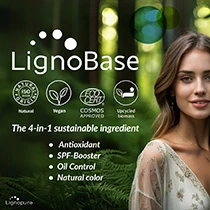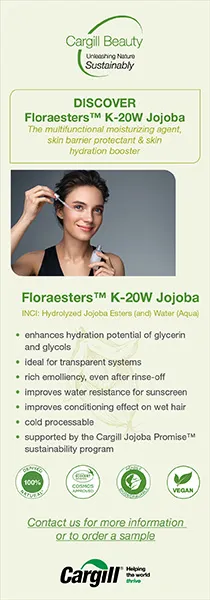US fragrance association calls for risk-based approach to assess ingredient safety

07 Feb 2023 --- A hazard-based approach to assess fragrance ingredient safety would not lead to safer products for consumers, states the Fragrance Creators Association in its latest white paper.
The paper highlights the importance of accounting for risk when engaging in advocacy. “Risk assessment, considering exposure, is the appropriate approach for evaluating the safety of fragrance ingredients and that ‘grouping’ similar chemicals is a complicated process that must be scientifically validated.”
The European Union (EU) adopted the Chemicals Strategy for Sustainability (CSS) to target faster safety assessments of chemicals for the protection of consumers, promoting sustainable products, replacing hazardous chemicals and banning them where essential uses are not proven.
To determine ingredient safety, CSS may utilize a broad grouping strategy to capture more materials in each assessment.
“Knowing a chemical is a hazard is an insufficient measure for gauging the true risk potential of an odor-producing ingredient,” the authors note.
“Labeling a chemical as hazardous would be ineffective at ensuring safe consumption and insufficient for measuring the true risk potential of any fragrance-producing ingredient.”
The authors say that the key to understanding risk is through exposure. However, exposure to fragrance ingredients is extremely low, mainly because of how little is necessary to smell them.”
 The paper aims to provide messaging for the fragrance industry regarding the importance of accounting for risk when engaging in advocacy.Hazard and exposure
The paper aims to provide messaging for the fragrance industry regarding the importance of accounting for risk when engaging in advocacy.Hazard and exposure
The paper spotlights the independently operated Research Institute for Fragrance Materials (RIFM), which has been addressing the safety issue for human health and the environment since 1966.
It details that RIFM has developed the tools and methods to provide scientifically vetted and peer-reviewed safety assessments, such as advanced grouping for read-across and (Q)SAR and aggregate exposure modeling using the Creme RIFM Aggregate Exposure Model.
“RIFM’s ongoing safety assessment program forms the foundation for industry self-regulation,” state the authors.
They argue for the need to look at the bigger picture, and say that stand-alone evaluation of the ingredient’s hazardness is inadequate to understand the risk posed by that ingredient.
For illustration, they enlist methyl eugenol, which is regarded as a hazard but occurs naturally in basil. Likewise, formaldehyde – a carcinogen – is found in many fruits and vegetables, including apples.
“The appropriate question is not: simply whether this chemical is hazardous. The better question is: At what level is this chemical likely to cause harm? How much basil or how many apples would I have to eat, or how much basil and apples would have to be dumped into the environment before we see a negative impact?”
They argue that that’s where risk assessment comes in as risk integrates these two factors – hazard and exposure – to determine the levels at which it is safe to enjoy these potentially hazardous consumables.
Human odor perception
The white paper explains that finding replacements for fragrance materials is “challenging, if not impossible,” because no two molecules, unless virtually identical, smell the same and have the same stability profile.
“It is important to note that if the palette of fragrances is limited due to regulatory restrictions, aggregate exposure will most likely increase for the remaining fragrance materials,” the authors say.
“Applying additional, costly testing requirements to low-volume materials will make many of these materials economically unviable, leading to the use only of higher-volume materials and increasing the volume of chemicals used overall.”
Humans can smell and detect some odors in parts per billion, “far lower than the most conservative thresholds beneath which a chemical might be considered even a possible risk to human health.”
As such, the white paper suggests that labeling a chemical as hazardous would be ineffective at ensuring safe consumption and insufficient for measuring the true risk potential of any fragrance-producing ingredient.
Edited by Radhika Sikaria












